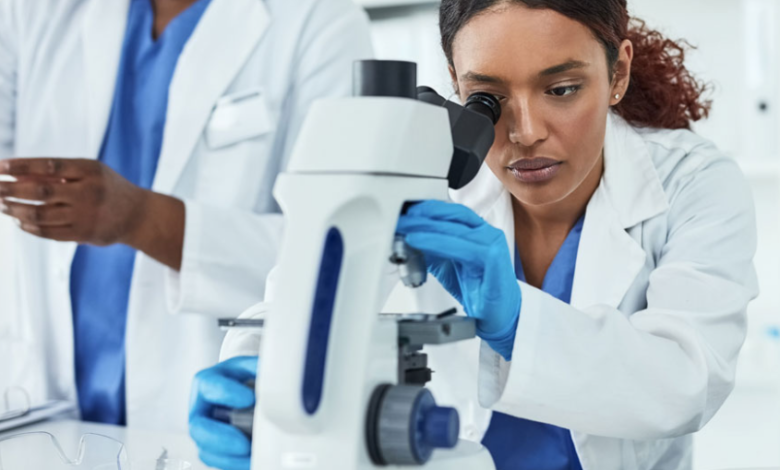The Road to Approval: Key Stages in Pharmaceutical Drug Development

Developing a new medicine is a long and complex process. Behind every pill, injection, or treatment that reaches patients lies years of scientific research, testing, and regulatory review. The pharmaceutical drug development journey is not just about discovery—it’s about proving that a drug is safe, effective, and reliable enough to help patients while minimizing risks. Let’s take a closer look at the key stages involved in this road to approval.
1. Discovery and Preclinical Research
The journey begins with discovery. Scientists explore potential compounds that could target a disease or condition, often through studying how cells and molecules interact. This stage may involve:
- Basic research: Understanding the biology of the disease.
- Screening compounds: Testing thousands of chemical or biological substances to identify promising candidates.
- Optimization: Refining compounds to improve effectiveness and reduce side effects.
Once a promising drug candidate is identified, preclinical testing begins. These studies are carried out in laboratories and in animals to evaluate safety and biological activity. The goal is to answer critical questions: Is the drug toxic? How is it absorbed, metabolized, and excreted? Preclinical results determine whether the drug is safe enough to move into human testing.
2. Investigational New Drug (IND) Application
Before clinical trials can begin, pharmaceutical companies must submit an Investigational New Drug (IND) application to regulatory authorities, such as the U.S. Food and Drug Administration (FDA). The IND includes data from preclinical studies, manufacturing details, and a plan for human trials.
Regulators review the application to ensure the proposed drug and study design protect volunteers’ safety. If approved, the drug can move forward into clinical testing.
3. Clinical Trials: Phase I, II, and III
Clinical trials represent the cornerstone of drug development, serving as the ultimate test to determine whether a potential therapy is truly safe and effective. These trials are meticulously designed and conducted with human volunteers and patients to generate the evidence required for regulatory approval.
- Phase I (Safety and Dosage): This first-in-human stage typically involves a small group of healthy volunteers. Researchers focus on how the drug interacts with the body—examining absorption, metabolism, and excretion—while determining safe dosage ranges and identifying early side effects.
- Phase II (Efficacy and Side Effects): Conducted with several hundred patients who have the condition in question, this phase assesses whether the drug produces the intended therapeutic effect. At the same time, safety and side effects continue to be closely monitored.
- Phase III (Large-Scale Testing): This pivotal stage includes thousands of patients across multiple clinical sites. The data collected provide a comprehensive view of the drug’s effectiveness, benefits, and potential risks under conditions that mirror real-world use.
While these phases are essential, they are also resource-intensive—taking years and significant investment to complete. To address these challenges, organ-on-a-chip companies are revolutionizing the landscape by offering advanced preclinical testing platforms that replicate human organ functions on microengineered chips. These systems allow researchers to predict human responses to drugs more accurately before entering clinical trials, potentially reducing costly failures and streamlining the path to approval.
Ultimately, clinical trials remain the gold standard for demonstrating that a new medicine is both safe and effective, but innovations like organ-on-a-chip technology are making the process smarter, faster, and more efficient.
See also: Driving Customer-Centric Marketing Strategies 3391069180
4. New Drug Application (NDA) or Biologics License Application (BLA)
Once clinical trials are completed, pharmaceutical companies compile all data into a New Drug Application (NDA) for chemical drugs or a Biologics License Application (BLA) for biologic products. These submissions can run tens of thousands of pages, including:
- Results from preclinical and clinical studies
- Details on manufacturing and quality control
- Proposed labeling and instructions for safe use
Regulatory agencies conduct a thorough review, often involving expert advisory committees. They assess whether the benefits outweigh the risks and whether the drug can be manufactured consistently at high quality.
5. Regulatory Approval and Post-Market Surveillance
If the review is successful, the drug receives regulatory approval and can be marketed to patients. But the process doesn’t end here. Once a drug is on the market, it enters Phase IV, or post-marketing surveillance.
During this stage, regulators and companies monitor the drug’s performance in the general population. Rare side effects or long-term risks may only emerge after widespread use. Companies are often required to conduct additional studies to gather more safety and efficacy data.
Challenges Along the Way
Drug development is a high-risk, high-cost endeavor. It can take 10 to 15 years and billions of dollars to bring a single new drug to market. Many drug candidates fail during clinical trials, often due to lack of effectiveness or safety concerns. Despite these challenges, the process ensures that approved medicines meet rigorous standards, protecting patients worldwide.
In Conclusion
The road to drug approval is lengthy, complex, and filled with obstacles. From early discovery to post-market monitoring, each stage plays a critical role in ensuring that new medicines are safe and effective. While patients may only see the end result—a pill in a bottle or a shot at the clinic—the journey behind it reflects years of dedication, innovation, and regulatory oversight.
By understanding the key stages of pharmaceutical drug development, we can better appreciate the immense effort behind every new therapy that improves and saves lives.




